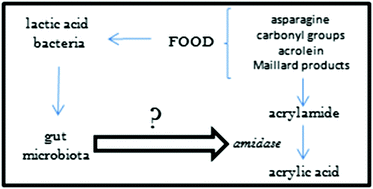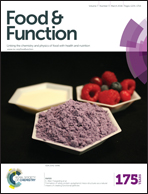A review of the interactions between acrylamide, microorganisms and food components
Abstract
Acrylamide (AA) and its metabolites have been recognized as potential carcinogens, but also they can cause other negative symptoms in human or animal organisms and therefore this class of chemical compounds has attracted a lot of attention. These substances are usually formed when heating asparagine in the presence of compounds that have α-hydroxycarbonyl groups, α,β,γ,δ-diunsaturated carbonyl groups or α-dicarbonyl groups. The acrolein pathway and enzymatic decarboxylation of asparagine, as well as endogenic processes, are other alternative routes to AA formation. It has been demonstrated that the animal model used for examining AA toxicity may not be sufficient to investigate these changes in humans, therefore it is necessary to design an in vitro model, which could provide more accurate insights into the direction of these processes in human organisms. Acrylamide can be metabolized through both oxidative and reductive pathways; moreover, there is also a chance that some representatives of intestinal microbiota are able to transform acrylamide. It was shown that there are various microorganisms, mostly bacteria, that produce amidases, i.e. enzymes decomposing AA. Lactic acid bacteria also appear to demonstrate the ability to use acrylamide as a carbon source, but this still requires further investigation. Another way to prevent AA toxicity is related to the presence of some food compounds, such as certain proteins or polyphenols. There are still lot of gaps in the current knowledge related to AA toxicity, so future potential research directions are presented in this review as well.


 Please wait while we load your content...
Please wait while we load your content...